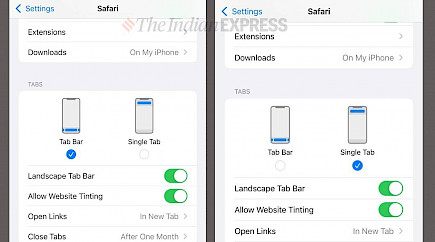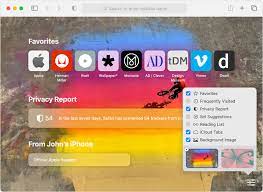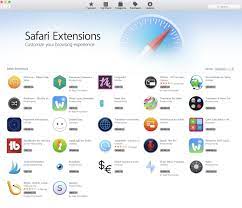
Safari is the default web browser for iPhones and iPads, making it the first obvious choice for Apple users.
From Apple Pay to the ability to save and share websites, Safari has a lot of cool features to offer. And today we will talk about some of them.
So, put on your learning caps and hop on the journey.
Let us begin…
1) Change/move the Position of the Tab Bar

The upgrade to iOS 15 moves Safari's address bar towards the lower part of the screen, which, theoretically, makes opened tabs more accessible. To navigate the opened tabs, move your finger left or right, and you'll be able to cycle through them.
The tabs can be set to be displayed at the highest point of the iPhone screen when you are in landscape mode. You can easily make these changes in Settings > Safari.
Then, turn on the switch to activate the Landscape tab bar. After that, when you put the iPhone in landscape mode, the tabs will show up on top.
If you'd prefer to keep the address bar in its usual place, you can select the single tab option. You can use the AA icon within the address bar and then select Show the Top Address Bar or Show the Bottom Tab Bar to toggle between the two.
If you're using an iPad and would like to change the way tabs are displayed in Safari, then go to the Settings menu and select Safari. Next, click the Compact Tab Bar to reduce the space your tabs take up at the upper right of your screen.
2) Arrange Tabs into Groups

Do you have too many tabs? Well, then you should try sorting them into groups! The procedure is slightly different depending on the device you prefer.
On an iPhone, you need to tap on the tabs icon and then choose "X tabs," then tap the "X Tabs" entry at the lower right. On the iPad, tap the sidebar icon and then choose the Tabs icon.
You can click on the New Empty Tab Group to create a new group or the New Tab Group from X Tabs to create an entire group from your tabs. When you have named the newly created group, it will be accessible from this menu.
You can also click on the thumbnail directly and press "Move to" Tab Group to create a brand new group for it, or to move it into the existing one. A more straightforward method is to hold the Tabs icon and then tap the Move button to
Tab Group to gain access to the option to group tabs.
3) Change the Start Page

You can modify your Safari homepage by adding or eliminating the sections you want to move, as well as selecting a background image.
First, click at the bottom of the page, and then click on the edit button.
You can turn off any section that you do not want to view, as well as drag and drop them to arrange their positions on your page.
For example, in the section Background Images, choose the background you want to upload or upload your own, then press the X button to show the brand new page.
4) Try a few Extensions and you won’t regret it!

Safari is now compatible with extensions, thanks to the latest update that was released for iOS 15 and iPadOS 15.
Test them out by going to the Safari settings menu, then going to General Extensions > More Extensions. Next, press the "Get" or "Price" button for any extensions that you would like to install.
You can then look up extensions that have been installed in the Extensions screen and enable or disable the extensions you'd like to install.
5) Private Browsing, a MUST feature

Suppose you do not wish for Safari to monitor the websites that you go to, your search history, or the AutoFill data you input.
In that case, private browsing mode will hide this information (although you'll not be entirely in the dark).
On an iPhone, you can tap on the tabs icon and then choose the Start Page or the X tabs on the right and choose Private.
You can also press "long-press" for a long time on the tabs icon and select the "Private" option. On iPads, start the sidebar and choose the private mode. Every page you launch is displayed in private mode.
You can exit the private mode by returning to the Tabs screen and selecting your previous tabs or pages.
6) Review a Privacy Report

Trackers from cross-sites monitor your internet-based actions as you navigate between different websites. If you're concerned about your privacy online, Safari blocks these trackers from identifying you automatically. It is also possible to see which trackers and websites are blocked.
Click on the AA icon on your iPhone (ellipsis icon for iPad) and then select privacy report. The window will reveal the number of trackers that were blocked from profiling you and the number of websites that contacted trackers.
Under the tab for Websites option, there is the list of websites that were in contact with trackers.
Click Trackers to find out which websites were blocked.
Winding-up
And those were all the hidden features that come with Safari 6.
Hope you liked the article. We will be back soon with other fun hacks and tutorials, until then. Stay Tuned, Good Day!





